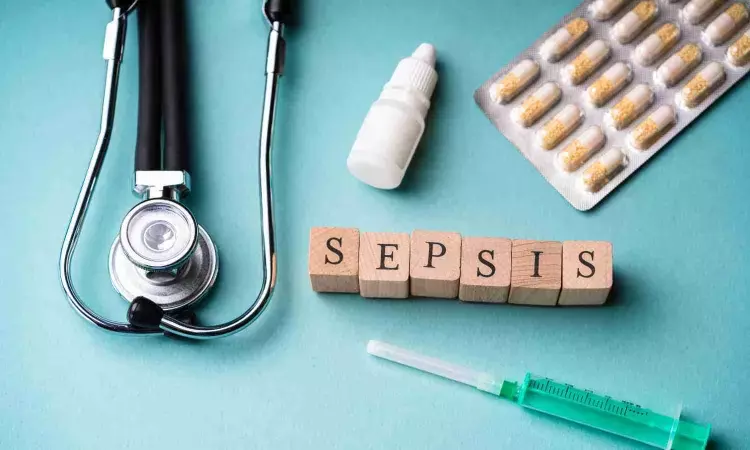- Home
- Medical news & Guidelines
- Anesthesiology
- Cardiology and CTVS
- Critical Care
- Dentistry
- Dermatology
- Diabetes and Endocrinology
- ENT
- Gastroenterology
- Medicine
- Nephrology
- Neurology
- Obstretics-Gynaecology
- Oncology
- Ophthalmology
- Orthopaedics
- Pediatrics-Neonatology
- Psychiatry
- Pulmonology
- Radiology
- Surgery
- Urology
- Laboratory Medicine
- Diet
- Nursing
- Paramedical
- Physiotherapy
- Health news
- Fact Check
- Bone Health Fact Check
- Brain Health Fact Check
- Cancer Related Fact Check
- Child Care Fact Check
- Dental and oral health fact check
- Diabetes and metabolic health fact check
- Diet and Nutrition Fact Check
- Eye and ENT Care Fact Check
- Fitness fact check
- Gut health fact check
- Heart health fact check
- Kidney health fact check
- Medical education fact check
- Men's health fact check
- Respiratory fact check
- Skin and hair care fact check
- Vaccine and Immunization fact check
- Women's health fact check
- AYUSH
- State News
- Andaman and Nicobar Islands
- Andhra Pradesh
- Arunachal Pradesh
- Assam
- Bihar
- Chandigarh
- Chattisgarh
- Dadra and Nagar Haveli
- Daman and Diu
- Delhi
- Goa
- Gujarat
- Haryana
- Himachal Pradesh
- Jammu & Kashmir
- Jharkhand
- Karnataka
- Kerala
- Ladakh
- Lakshadweep
- Madhya Pradesh
- Maharashtra
- Manipur
- Meghalaya
- Mizoram
- Nagaland
- Odisha
- Puducherry
- Punjab
- Rajasthan
- Sikkim
- Tamil Nadu
- Telangana
- Tripura
- Uttar Pradesh
- Uttrakhand
- West Bengal
- Medical Education
- Industry
Advances in pediatric sepsis biomarkers: A pediatric investigation review

Sepsis is a life-threatening condition triggered by a severe infection. Severe sepsis and septic shock are progressive stages of sepsis, associated with multi-organ failure and death. Mortality for pediatric sepsis ranges from 4% to 50%, depending on illness severity, risk factors, and geographic location. The risk of recurrence after surviving severe sepsis is significantly high in most cases.
One of the persistent challenges in treating sepsis is the lack of timely diagnosis. Non-symptomatic children can rapidly present morbid symptoms in a short span of 36 to 72 hours. Current practices rely on broad-ranged biomarkers such as CRP (C-reactive protein, an inflammation marker), PCT (procalcitonin, a pro-hormone), and lactate for the detection of sepsis. Despite recent advances in science and technology, there is currently no singular diagnostic test that reliably detects sepsis.
Their review, published in Pediatric Investigation, systematically classifies biomarkers according to the sepsis progression stage in patient samples and provides a comprehensive overview of research advancements across various omics levels. The study authors emphasize that timely and precise identification and treatment are crucial for minimizing the risk of sepsis and enhancing the prognosis. Multi-omics profiling technology, encompassing genomics, transcriptomics, proteomics, and metabolomics, is employed to identify reliable biomarkers.
The combined summary is as follows: Genomics delves into genetic variations linked to sepsis susceptibility, spotlighting primary immunodeficiency disease (PID) gene variants, along with polymorphisms in genes such as PAI-1 and CD143. Transcriptomics, focusing on transcription patterns, identifies diagnostic targets of some mRNAs or miRNAs. For proteomics, it was observed that IL-27 screening combined with procalcitonin enhanced the predictability of sepsis screening. The review also took stock of metabolites, chemicals released by cells during cellular processes, as potential biomarkers. Similar to lactate, which has already been established as a sepsis biomarker, 2-hydroxybutyrate, 2-hydroxyisovalerate, creatine, and glucose, are common metabolites that may detect sepsis severity. However, these potential sepsis biomarkers still require validation in a large patient cohort in the future.
An ideal sepsis biomarker should enable the detection of the infection group, provide insights into the progression stage of sepsis, and highlight the susceptibility of high-risk patients. Early detection of sepsis can aid in targeted treatment rather than broad-spectrum antibiotic, antiviral, or antifungal therapies.
The complexity of genomic factors and analysis of differentially expressed genes and co-expression networks reveals potential biomarkers for distinguishing pediatric sepsis patients. While high-throughput screening identifies immune factors and gene expression patterns, further validation and larger sample sizes are needed for robust biomarker assessment in pediatric sepsis. The integration of multilevel omics data, aided by artificial intelligence, holds promise for discovering sepsis biomarkers. While no single biomarker serves as the gold standard, a panel of genes or markers may enhance early diagnosis, treatment, and prognosis, emphasizing the need for further research and clinical validation.
Reference:
Xinyu Wang, Rubo Li, Suyun Qian, Dan Yu, Multilevel omics for the discovery of biomarkers in pediatric sepsis, Pediatric Investigation, https://doi.org/10.1002/ped4.12405.
Dr Kamal Kant Kohli-MBBS, DTCD- a chest specialist with more than 30 years of practice and a flair for writing clinical articles, Dr Kamal Kant Kohli joined Medical Dialogues as a Chief Editor of Medical News. Besides writing articles, as an editor, he proofreads and verifies all the medical content published on Medical Dialogues including those coming from journals, studies,medical conferences,guidelines etc. Email: drkohli@medicaldialogues.in. Contact no. 011-43720751


